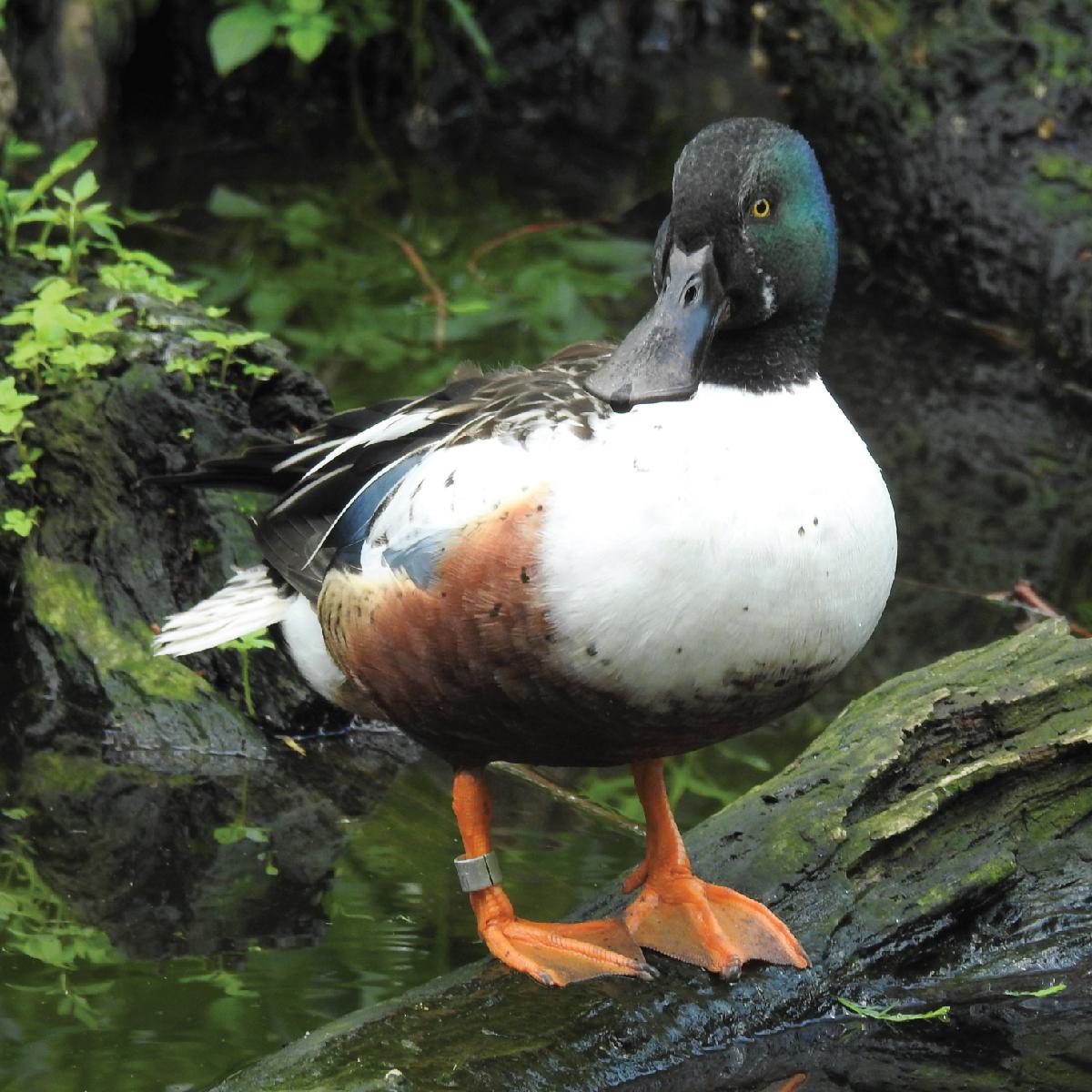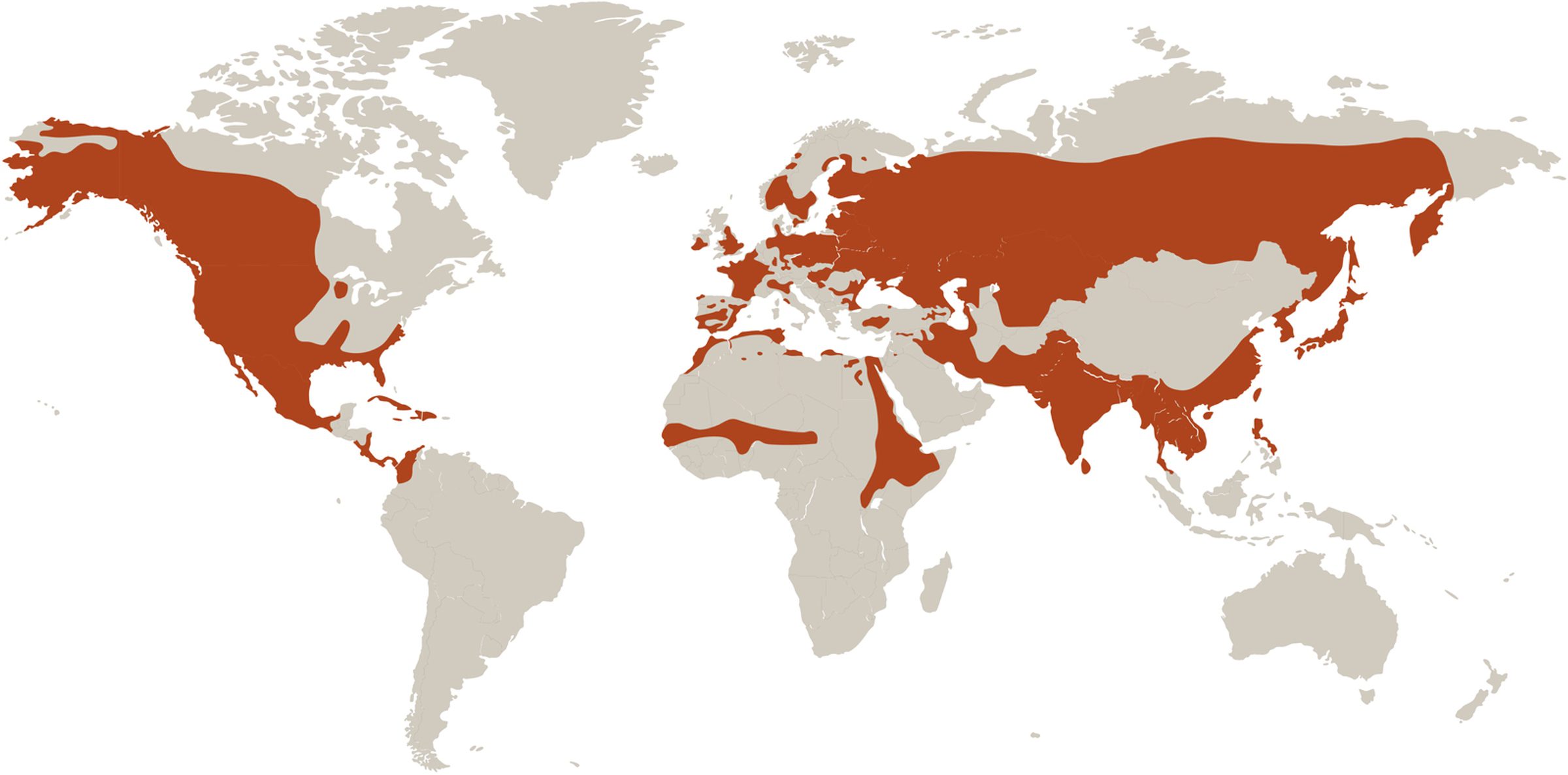
Northern Shoveler
Anas clypeata
Did you know?
- Northern shovelers are a part of the Anatidae family, which they share with other water birds, such as ducks and geese.
- Their name is derived from the shovel-shape of their bills.
- They live in a variety of freshwater habitats around the world, including Eurasia, North America and Africa.
- They have one of the largest bills of any waterfowl.
- A female will lay up to 12 eggs per clutch.
Adaptations
Northern shovelers suck water into the front of their bills and then use the comb-like edges on their bill to strain out plants and small aquatic animals. This allows them to catch prey with minimal debris. The male northern shoveler is a handsome bird, with a green head, white body, reddish undersides and black wings. As with many other duck species, the female is colored more drably, primarily mottled brown. The male’s coloration helps him attract females, while the female’s darker hues help her camouflage when she is nesting.
Migration
Northern shovelers are a migratory species. Annually, they migrate to breeding grounds in March and typically mate in May and June. In October and September, they complete their autumn migration, some populations moving across Arabia and into Africa. Typically, during warm months, northern shovelers live in Europe and North America. During the winter, populations are found in southern United States, Africa, Pacific Islands and South America. Even hatchlings migrate and will do so about six weeks after hatching.
Threat Level
- Unknown
- Common
- Near Threatened
- Threatened
- Endangered
- Critically Endangered
- Extinct in the Wild
Common
The Northern Shoveler is widespread and abundant.
Range
Eurasia, North America; winters in southern United States, Africa, Pacific Islands, South America
Habitat
Shallow lakes, marshes, swamps, slow streams, flooded fields

We care about Northern shovelers
We support northern shovelers in the 1904 Flight Cage at the Zoo. Learn more about how we are helping wildlife around the world: Dedicated to Conservation
Find this animal in Historic Hill

SAINT LOUIS ZOO ZONE
Historic Hill
Historic Hill is a lovely stroll through one of the oldest parts of the Saint Louis Zoo. From the 1904 World’s Fair Flight Cage to the Spanish architectural flavor of the 1920s in the Bird House, Primate House and Herpetarium to the finishing touches of our thoroughly modern exhibits, this area of the Zoo has a unique ambiance and a nostalgic history that make it a great destination.

